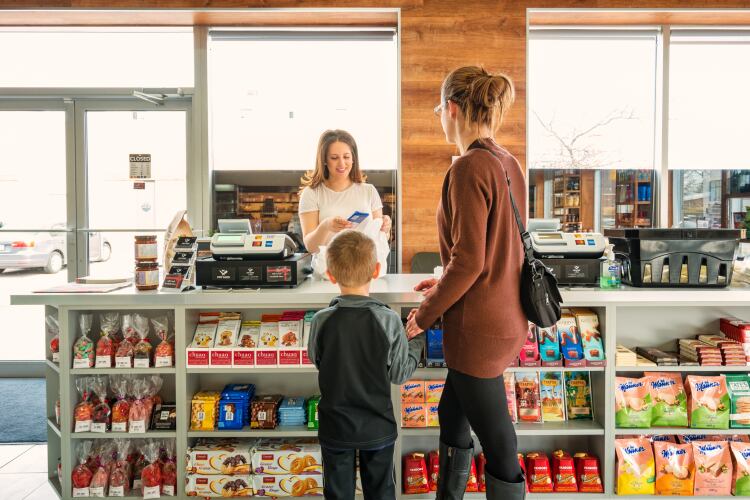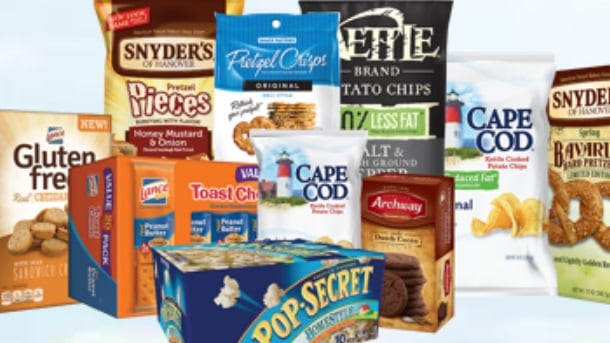Key takeaways:
- Campbell Snacks’ sales fell 4% in fiscal 2025, making it the company’s weak spot.
- Shoppers are prioritizing essentials and healthier options, leaving cookies and crackers under pressure.
- Campbell is banking on innovation, marketing and cost savings to revive snack growth in 2026.
Campbell Soup Company wrapped up fiscal 2025 with a split personality. On the bright side, its Meals & Beverages business was humming. Rao’s – the pasta sauce darling it picked up last year – is storming toward billion-dollar brand status, joining Campbell’s, Goldfish and Pepperidge Farm in the top tier. Soups and broths also held up as families kept cooking at home.
The Snacks division told a different story. Net sales slipped to $4.20 billion from $4.38 billion the year before. Organic sales were off by 3% and in-market consumption fell about 2% in the fourth quarter. Management pointed to “modest sequential improvement,” but the bounce back everyone was waiting for never really arrived. “The recovery we anticipated in snacks did not materialize,” chief executive Mick Beekhuizen admitted.
That weakness forced Campbell to lower its full-year organic sales outlook into negative territory. It still eked out earnings thanks to productivity and cost-savings programs, but Snacks was the drag. Even household names like Goldfish, Snyder’s of Hanover and Pepperidge Farm cookies were caught in the slowdown.
The broader picture isn’t much rosier. Circana data show salty-snack dollars in convenience stores down roughly 3% in the 52 weeks ending May 18, 2025. Cookies and crackers underperformed, too. By contrast, protein-rich snacks such as jerky and nuts kept moving.
In short, America hasn’t stopped snacking – it’s just picking different things.
Belt-tightening bites into snacking

Inflation may not be grabbing headlines like it did last year, but shoppers still feel it. Budgets are tight and people are more deliberate with every dollar. A gallon of milk makes the list. A bag of pretzels? Maybe not this time.
Campbell saw that play out most clearly in cookies and crackers. Goldfish – usually a reliable growth engine – was down earlier in the year, only showing signs of life in Q4. Consumers who did reach for them often chose bulk packs or cheaper private labels.
Competitors are reporting the same thing. Mondelez and PepsiCo both said biscuit and savory snack sales are under pressure as households focus on ‘must-haves’. Mondelez chief Dirk Van de Put summed it up: shoppers are “switching to more essentials and snacking categories are suffering.”
The effect is that snacks have slipped from everyday staple to occasional treat. That change has forced the majors into heavier promotions just to keep product moving, which helps sales but squeezes profit margins.
Healthier choices, different cravings

Money isn’t the only factor. Health is changing the snack game, too. Roughly four in 10 Americans say they’re steering clear of ultra-processed foods (UPFs), according to the International Food Information Council. Shoppers are scanning labels, worried about sugar, dyes and salt.
That spells trouble for a portfolio built on crackers, cookies and pretzels. Campbell’s big brands – Snyder’s, Kettle, Pepperidge Farm – are beloved but often seen as indulgent. At the same time, jerky, meat sticks and high-protein bars are flying off shelves. Keto and protein-first diets are only fanning the flames.
Campbell has tried to inject some novelty. Limited-edition Milanos – chai latte, pumpkin spice – gave the cookie category a 3% lift in Q4. But new flavors can only do so much when the bigger trend is shifting away from the aisle entirely. To win back consumers, Campbell Snacks will need to do more than dress up the classics. It will have to meet shoppers where their cravings – and consciences – are heading.
Competitive pressures and lost share

Even in a sluggish market, somebody gains. Campbell admitted it lost share in pretzels, chips and crackers in the fourth quarter. Retailer brands are making hay with cheaper alternatives, while smaller players carve out niches with trendy or better-for-you claims.
Campbell’s counterpunch has been to pour more into advertising and promotions. That kept volumes from slipping further but dragged down profitability. Earlier in the year, Snacks’ operating earnings tumbled nearly 30% year-on-year. Snyder’s pretzels stayed soft in Q4, while Goldfish finally perked up.
There were glimmers. Snack Factory’s Pop’ums drew notice and Kettle leaned into healthier formats with some success. Management is betting that extra marketing will reignite Goldfish. Still, Campbell is walking a tightrope: invest enough to protect share, but not so much that margins collapse.
Can Campbell Snacks turn the tide?

Beekhuizen insists the portfolio is strong and the slump is temporary. His plan for fiscal 2026 leans heavily on consumer-driven innovation and bolder marketing campaigns.
The New Jersey-based company is also pressing harder on costs, having delivered $145 million in savings last year and raising its long-term goal to $375 million by 2028. Those savings are meant to offset inflation and tariffs, while funding the ad dollars needed to put snacks back on shopping lists.
Official guidance is cautious: organic sales between -1% and +1%. Management believes Snacks will stabilize in the back half of 2026, with growth resuming after that. Whether that happens depends on whether households decide crackers and cookies deserve a regular spot in the cart again.
For now, Campbell’s feels the crunch. A division that once fed off America’s endless appetite for everyday snacking is learning that the landscape has changed. If it can adjust – offering sharper value, healthier formats and the occasional irresistible treat – it might just win back its edge. If not, Goldfish and Snyder’s could risk becoming reminders of snacking’s more indulgent past.


